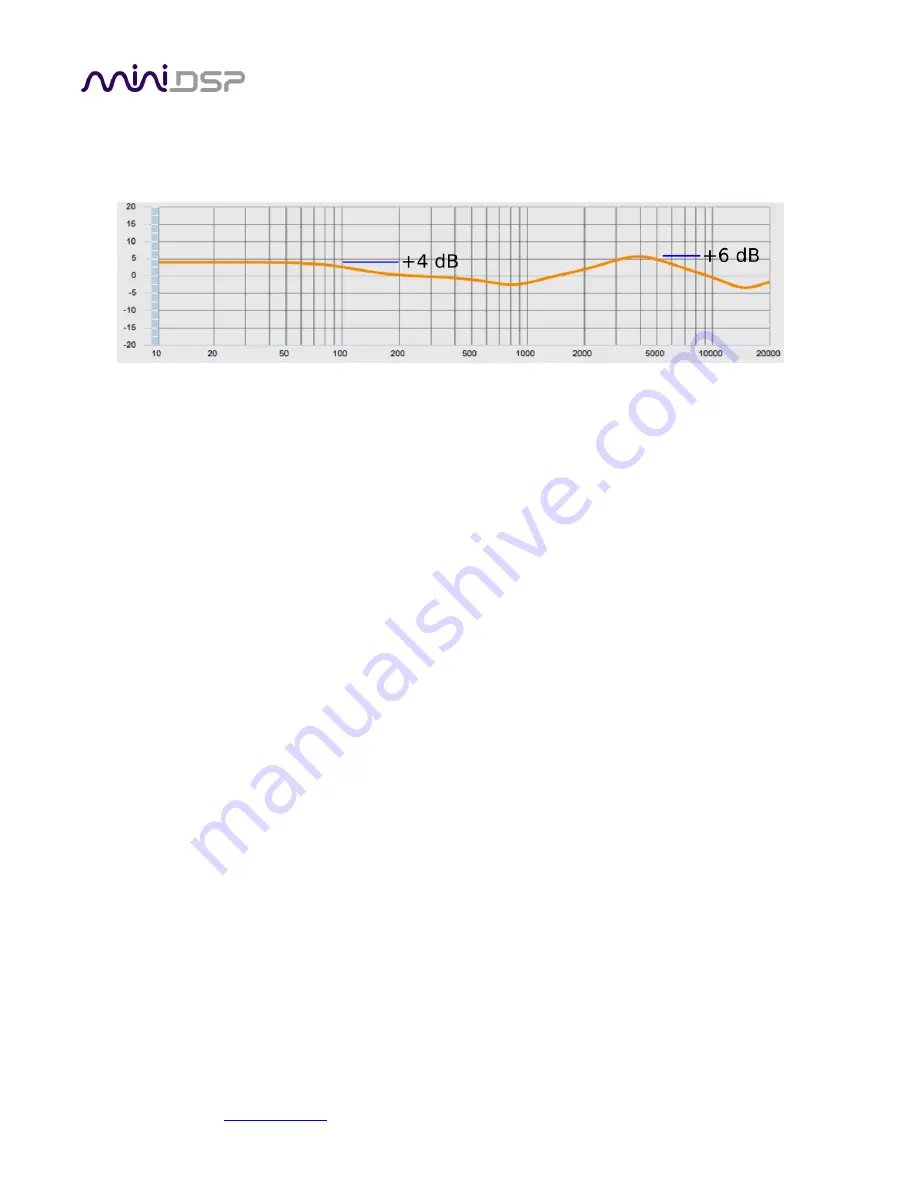
miniDSP Ltd, Hong Kong /
/ Features and specifications subject to change without prior notice
42
8.11.2
A more realistic example
In practice, the HA-DSP is processing a signal with a spread of frequencies. Consider the example EQ shown on
page 29:
With the default unity gain through all DSP processing blocks, this filter will result in clipping on music with a lot
of bass content. Assuming this is the only processing (i.e. no bass or treble boost and no FIR filters), we could
take two approaches.
Ultra-conservative
Set either Input Gain or Master Volume to -6
dB. This will ensure that no digital input signal (that isn’t
already clipped) will clip at the output stage. (This approach will always be required in certain
situations such as when running full-scale test signals through the HA-DSP.)
Conservative
Set either Input Gain or Master Volume to -4 dB. Since there is typically a lot of energy in the bass
region, this will ensure that low frequencies do not cause clipping. The 6 dB peak at 4000 Hz is unlikely
to cause clipping
with music.
In the case where you are using additional EQ, such as Bass or Treble boost, you will need make sure that you
click on the
Overall Response
checkbox to assess the total amount of gain.









































